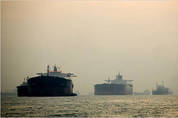
A steep rise in vessel orders risks bringing the recent bonanza in oil tanker shipping to an abrupt end, according to the latest edition of the Tanker Forecaster, published by shipping consultancy Drewry.Following recent modest growth, the oil tanker fleet is expected to reach new heights by 2016, climbing to 371 million dwt according to Drewry estimates. In 2014 fleet growth was flat, inching up just 0.6% as deliveries slumped 38% to 9.1 million dwt and demolitions remained high. But capacity expansion is gathering momentum and is expected to reach annual growth of over 4% in 2016, on the bac
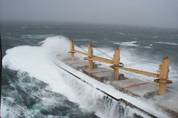
As has always happened in the past, shipping’s new money sees no end to the boom and proceeds to order new ships to expand the size of the fleet. This ignores the fact that the boom profits only arose when the demand for shipping exceeded the supply of ships and itself was only a temporary imbalance.Thus the majority of new money has invested in ordering new ships, or taking over orders from companies already in default, or even buying non-performing debt from troubled banks. Despite the fact that several thousand new ships have delivered in the past 5 years, few have traded profitably if one
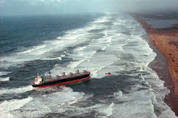
Now that the New Year, except in China, is with us it is time to focus on shipping’s future in the troubled waters of the Global Economy.Shipping has always been a vital ingredient in physical World Trade, but never more so with the evolution of the industrial economies of Asia and the search for minerals and other raw materials in Africa and South America. This all while the movement of energy products, oil and gas, continues to expand.Shipping is vital to all these activities as consumers and suppliers invariably live oceans apart. Yet despite its vitality and its unique ability to produce s
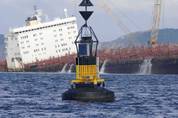
Shipping safety remains an ever present issue at the start of 2015 as industry regulators make louder calls to investigate a range of incident types and improve safety standards. According to the latest data from IHS (NYSE: IHS), a leading global provider of critical information and insight, a total of 1,639 maritime casualty incidents were reported during 2014, a 10 percent increase from 2013 when 1,489 incidents were reported.The chart below shows the numbers of incident types that has occurred for 2013 and 2014 across all incident categories worldwide.Notably, of all the casualty incident t
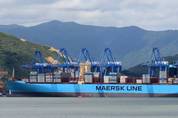
Another commodity that has seen massive growth in demand is milk powder, with the amount shipped from Europe to Asia tripling over the past three years, Maersk Line estimates show.As a result of this structural shift, the Danish line has more or less stopped carrying recyclable cargoes, according to Mr Sigsgaard.Wastepaper, for example, that once accounted for up to one-fifth of eastbound shipments, now represents less than 4%.Instead, Maersk is focusing its efforts on new customers emerging in this trade who are shipping more valuable goods and so in turn are prepared to pay higher freight ra
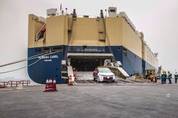
RAPIDLY expanding middle classes in Asia, with their greater spending power, are reshaping traditional trade patterns and forcing shipping lines to tear up the rule book.Nowhere is this more apparent than in the Asia-Europe trades, which for years have been dominated by the westbound leg, as Asian exporters fed the seemingly insatiable demand in Europe for clothing, footwear, the latest electronic gadgets and a vast range of other everyday merchandise.Cargo shipped on the backhaul route consisted largely of low-value commodities such as wastepaper, needed for packaging of the products being sh
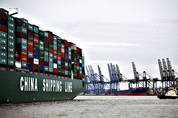
Expect ships to get bigger in 2015 even as overcapacity persists, and this will also have implications for port congestion too. Freight rate volatility shows no sign of changing on the major trade lanes.4. RatesThere is little sign that freight-rate volatility will change on the major trade lanes in 2015 with no indication as yet that lines will change their marketing or sales ploys.With bigger vessels coming on stream, lines will be under pressure to make sure slots are filled and external factors such as congestion, sulphur surcharges and seasonal demand will mean that lines will look to gen
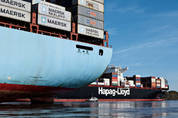
Expect ships to get bigger in 2015 even as overcapacity persists, and this will also have implications for port congestion too. Freight rate volatility shows no sign of changing on the major trade lanes. 1. Overcapacity The global containership industry has been blighted by overcapacity over the last few years and the problem looks set to continue in 2015. According to Lloyd’s List Intelligence, more than 1.9m teu is set to be added to the global container fleet next year. This represents an increase in the total container fleet of 10% and many of these vessels will be in the larger size categ
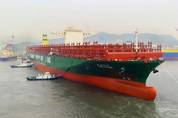
Dynamar has issued the 12th edition of its annual Top 25 Container Liner Operators publication. It offers an exclusive insight into world’s largest container shipping companies, their histories, natures, characteristics, developments, strategies, relationships and performances.Cost reduction, in the form of ever-larger less fuel consuming and more efficient ships has been the answer of many of the Top 25 container liner operators to their constantly declining revenues. Under the stagnating markets, as it has been the case for a number of years now, the paradox is that this growing fleet of inc
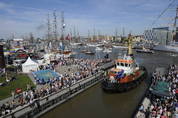
In a bid to help ports become more competitive, the Organisation for Economic Co-operation and Development’s (OECD) recent report looks at mitigating negative port impacts and regaining their role as drivers of urban economic growth.While ports and cities are historically strongly linked, the OECD report says the link between port and city growth has become weaker.According to the report, one tonne of port throughput is on average associated with US$100 of economic value added, and an increase of one million tonnes of port throughput is associated with an increase in employment in the port of